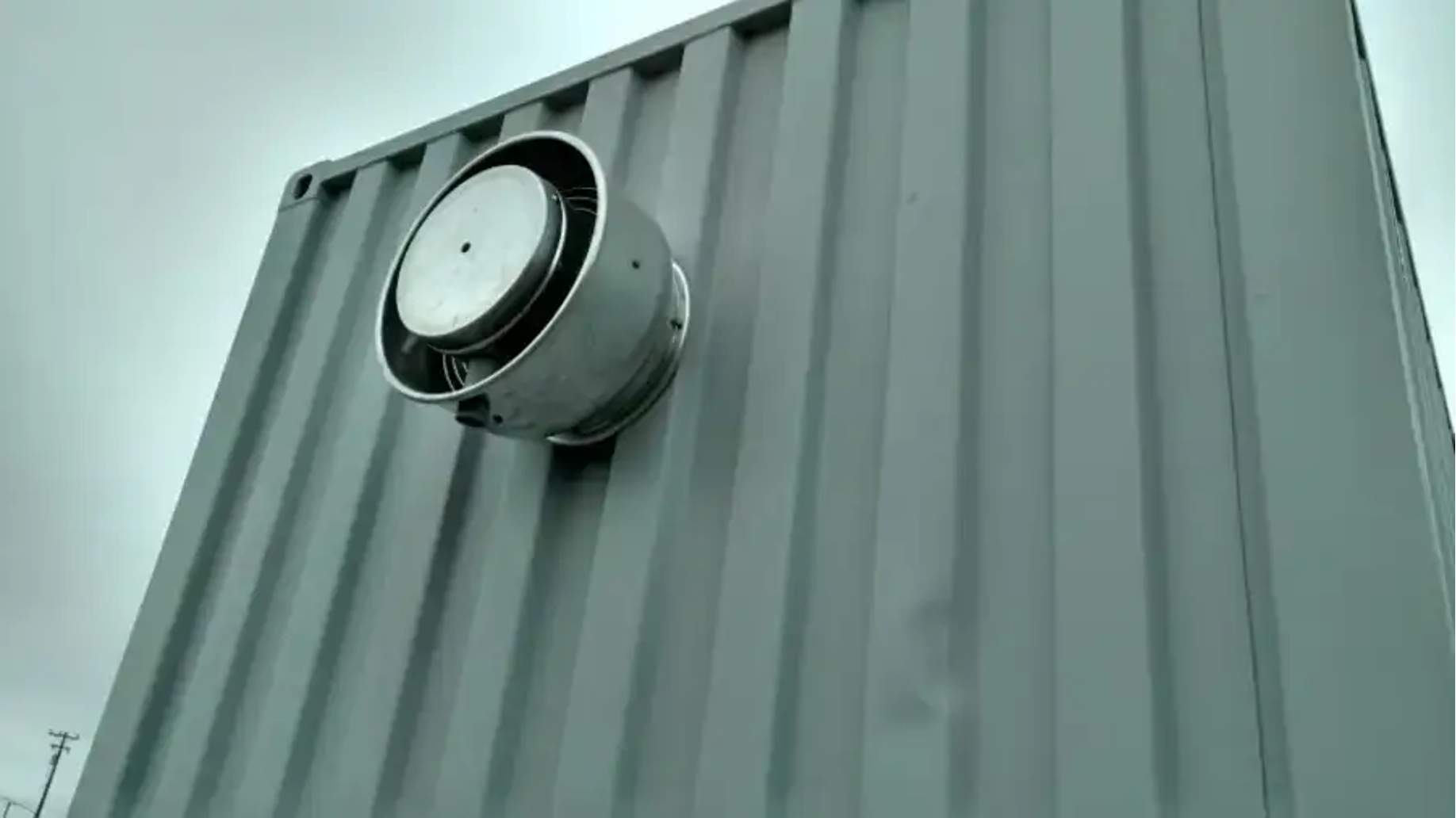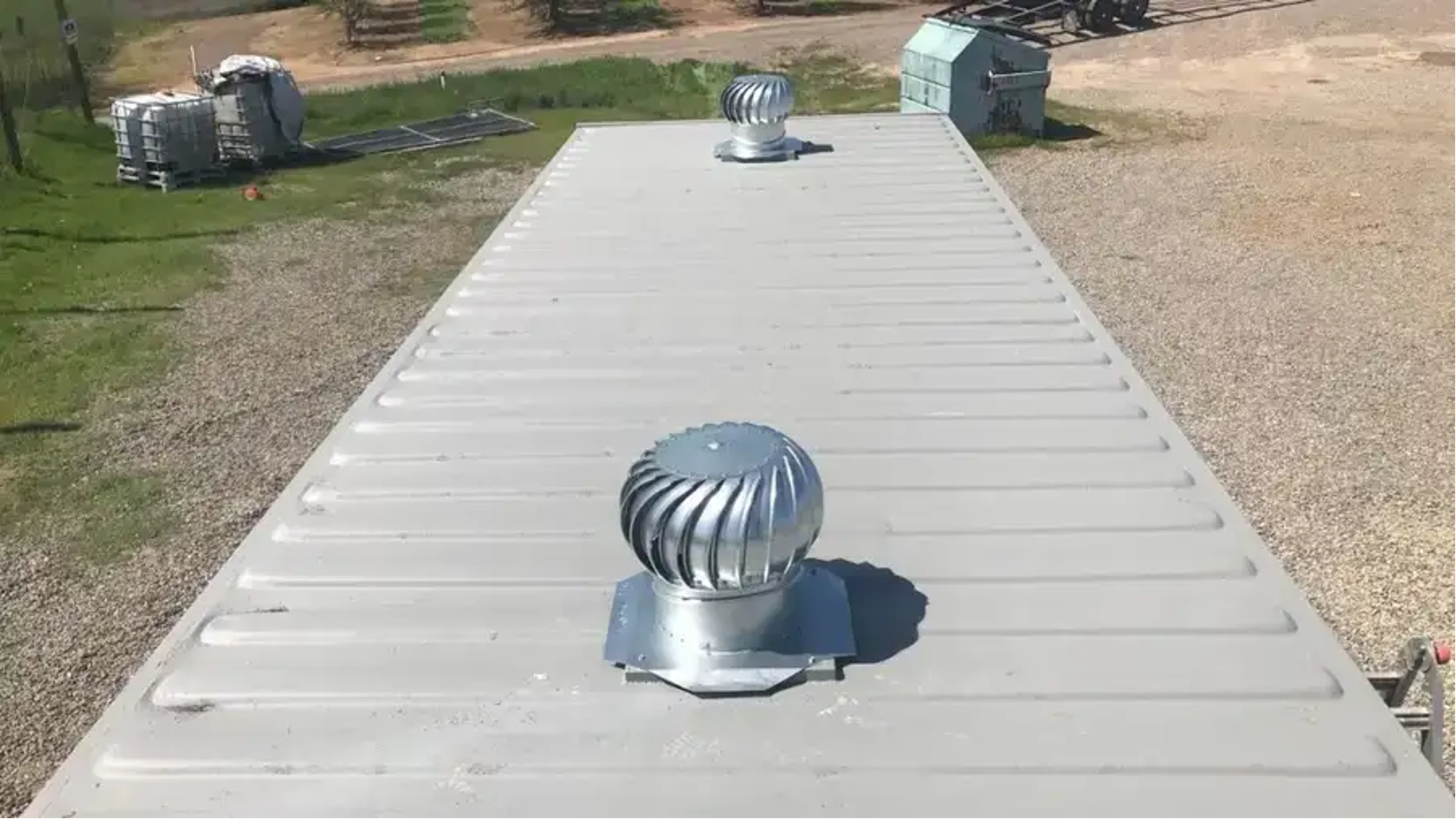The Best Methods For Ventilating A Shipping Container
Get a quoteBest Ways to Ventilate a Shipping Container
Key Takeaways
- Proper ventilation in shipping containers prevents moisture build-up to reduce the risk of mold and rust.
- Passive vents are cost-effective and rely on natural airflow to regulate temperature and humidity.
- Roof vents help release trapped heat, which is important in hot climates to maintain a comfortable environment.
- Consider the container's purpose, climate, and budget when choosing a ventilation method.
- Conexwest’s quality shipping container fabrication services include a variety of vents like solar tops and man doors.
Why Proper Ventilation Matters For Shipping Containers
- Temperature Regulation: Steel shipping containers can absorb heat rapidly when exposed to sunlight. Without ventilation, the interior can become uninhabitable, akin to an oven. Proper airflow with vents makes the container more comfortable and protects sensitive items from heat damage.
- Condensation Control: When warm, moist air inside a container contacts cooler steel walls, condensation forms. This moisture can lead to rust and corrosion, damaging both the container and its contents. Adequate ventilation reduces humidity levels and prevents condensation-related issues.
- Air Quality Maintenance: In containers used as living or working spaces, fresh air circulation is essential for maintaining healthy air quality. Stale air can harbor bacteria and mold, posing health risks to people in it. Proper ventilation provides a continuous flow of fresh air to improve air quality.
- Rust Prevention: Moisture is the primary enemy of metal structures. Ventilation plays an important role in preventing rust formation by allowing moisture-laden air to escape, thereby preserving the integrity and longevity of your container.
- Health and Safety Risks: Lack of ventilation can lead to dangerous situations, including the buildup of toxic fumes from stored items like paints or chemicals. Plus, high temperatures combined with stagnant air can increase the risk of fire or explosion, making proper ventilation essential for safety.
Conexwest, a leader in shipping and storage solutions based in Northern California, offers new, used, and refurbished containers from 10ft to 45ft, with fast delivery within 3–7 days and container fabrication options like adding shelves and locks. We serve over 10,000 customers nationwide, including prestigious clients like the U.S. Navy and Google. As an ISO 9001 and AWS-certified company, we ensure top quality and competitive pricing. |
5 Best Ventilation Methods For Shipping Containers
1. Louvered Vent
Louvered vents allow air to flow in and out while preventing water, dirt, and debris from entering the container. Typically sized around 12 inches by 12 inches, these vents are installed on the sides of the container to promote cross-ventilation. They are a passive ventilation option that does not require electricity and is ideal for basic airflow needs.
2. Man Door Vent
Man door vents are installed in conjunction with standard man doors on shipping containers. These vents allow for additional airflow while maintaining security and accessibility. They can be useful in combination with other ventilation methods to enhance air circulation within the container.
3. Power Louvered Vent

Power louvered vents maintain the airflow inside your container actively.
Power louvered vents are an advanced version of standard louvered vents that use mechanical fans to enhance airflow. These vents can automatically adjust based on temperature or humidity levels, providing a more controlled ventilation solution.
4. Roof Turbine Vent
Traditional roof turbine vents (also known as whirlybirds) rely on wind to ventilate the container. They protrude from the roof and help exhaust stale air while allowing cooler air to enter through side vents. This passive method is effective for reducing humidity and heat inside the container without requiring electricity.
5. Solar Roof Vent
Solar roof vents harness solar energy to power ventilation fans, making them an eco-friendly option for off-grid applications or locations with limited access to electricity.
Factors To Consider When Choosing A Ventilation Method
- Intended Use of the Container: Determine whether the container will be used for storage, living space, or as a workspace. Containers used for living may need better ventilation than the ones used for simple storage.
- Climate Conditions: Consider the local climate, including temperature extremes and humidity levels. Hot and humid climates may require more robust ventilation systems to prevent moisture buildup.
- Container Size: The size of the container influences the number and size of vents needed. Larger containers may require multiple vents or fans for adequate airflow.
- Type of Cargo or Contents: Assess the sensitivity of the items stored within the container. Items that are moisture-sensitive or require specific temperature conditions may need specialized ventilation solutions.
- Maintenance Requirements: Consider how easy it is to maintain the chosen ventilation system. Regular inspections and cleaning are necessary for effective operation, especially for mechanical systems.
- Energy Source Availability: For active ventilation methods (like power roof turbine vents), check the availability of electrical connections or consider solar-powered options if off-grid solutions are needed.
- Budget Constraints: Factor in installation costs and ongoing maintenance expenses when selecting a ventilation method. Passive systems are less expensive than active systems.
How Conexwest Can Help You Ventilate Your Shipping Container

Conexwest’s highly trained technicians know how to install vents on your shipping containers perfectly.
1. Customized Ventilation Solutions
We provide a variety of ventilation options, including louvered vents, power louvered vents, and roof turbine vents. These solutions help you manage airflow, reduce humidity, and prevent condensation buildup.
2. Professional Installation
Our skilled technicians will handle the installation of your chosen ventilation system so it’s done correctly and efficiently. We’ll also work with you to determine the best locations for vents based on your container’s usage and environment.
3. Quality Fabrication Services
In addition to ventilation, we provide comprehensive container fabrication services. This means we can modify your shipping container to include additional features like windows or partitions to enhance its functionality.
4. Ongoing Support and Maintenance
We don’t just stop at installation. Our team is available for ongoing support and maintenance so your ventilation system continues to operate effectively over time.
Frequently Asked Questions (FAQs)
- How many vents should I install in my shipping container?
The number of vents required depends on the size of the container and its intended use. For standard 20ft containers, installing at least two pairs of passive vents is recommended. This setup allows for effective cross-ventilation.
If the container is used as a living space or for storing moisture-sensitive items, consider adding more vents or integrating exhaust fans to enhance airflow.
- Can ventilation systems be added to existing containers?
Yes, ventilation systems can be retrofitted to existing containers. Most systems, including passive vents and exhaust fans, can be installed with minimal modifications to the container's structure.
- Are there eco-friendly ventilation options available?
Yes. Solar-powered ventilation systems are an excellent eco-friendly option. They use renewable solar energy to power fans, reducing reliance on electricity and minimizing carbon footprints.
- How often should I maintain my ventilation system?
Regular maintenance is recommended so your ventilation system functions effectively. Check for blockages, clean vents, and assess airflow at least seasonally or whenever you notice signs of poor ventilation.
- Can I see examples of past projects of Conexwest?
Yes. We have a gallery showcasing previous fabrication projects that highlight our capabilities and the variety of modifications we can perform.
